Mastering Spring Rolls: Recipes, Tips, and Cultural Insights
Spring rolls are a beloved staple in Asian cuisine, renowned for their crispy exterior and savory fillings. Originating from China, these delicacies have spread across the globe, each region adding its unique twist to the classic recipe.
Typically enjoyed as appetizers or snacks, spring rolls are characterized by their thin, translucent wrappers made from wheat or rice flour. These wrappers encase a flavorful medley of ingredients, often including vermicelli noodles, fresh vegetables like carrots, cabbage, bean sprouts, and seasoned meat such as shrimp, pork, or chicken.
What sets spring rolls apart is their versatility and lightness. Unlike their cousin’s egg roll, which is deep-fried and heavier, spring rolls are usually lightly fried or even served fresh without cooking.
This makes them popular for those seeking a healthier option without compromising taste. They are commonly served with dipping sauces, such as sweet chili sauce, peanut sauce, or soy sauce with chili flakes, enhancing their rich flavor profile.
Whether enjoyed as part of a meal or as a standalone snack, spring rolls are a favorite for their delightful crunch, vibrant fillings, and ability to cater to different dietary preferences, including vegetarian and gluten-free diets.
What Are Spring Rolls Wrapped In?
Spring rolls can be wrapped in various thin, pliable wrappers made from different ingredients, each imparting a distinct texture and flavor to the final dish. Some common types of wrappers include:
- Rice Paper: Also known as rice paper wrappers or rice paper sheets, these translucent wrappers are made from rice flour, water, and salt. They are soaked briefly in water to soften before being filled and rolled. Rice paper wrappers are popular in Vietnamese cuisine and are often used for fresh spring rolls.
- Wheat Flour: Spring roll wrappers made from wheat flour are thicker and slightly chewy than rice paper wrappers. They are commonly used in Chinese cuisine for both fresh and fried spring rolls.
- Egg Roll Wrappers: These wrappers are made from a combination of wheat flour, water, and eggs, resulting in a slightly thicker and richer wrapper. Egg roll wrappers are typically used for deep-fried spring rolls in Chinese and American Chinese cuisines.
- Tapioca Starch Wrappers: Tapioca starch wrappers, also known as tapioca sheets or bánh tráng wrappers, are made from tapioca flour and water. They are thin and translucent, similar to rice paper wrappers, and are commonly used in Vietnamese cuisine for fresh spring rolls.
- Lettuce Leaves: In some variations, large lettuce leaves such as romaine or butter lettuce are used as wrappers for spring rolls, particularly for a lighter and low-carb option. The lettuce leaves provide a refreshing crunch and a natural wrapper for the filling.
The choice of wrapper depends on personal preference, regional tradition, and the desired texture and flavor of the spring rolls.
Spring Roll History
The history of spring rolls dates back to ancient China, where they are believed to have originated during the Jin Dynasty (265-420 AD). Initially known as “spring dish” (春盘, chun pan), they were traditionally consumed during the Spring Festival to mark the arrival of spring, hence the name. These early spring rolls were made using a thin pancake filled with vegetables and meat, then rolled up and eaten.
Over time, spring rolls spread throughout East Asia, evolving into different regional variations. In Vietnam, spring rolls (gỏi cuốn) are typically made with fresh herbs, vermicelli noodles, and shrimp or pork, wrapped in rice paper and served cold.
In Thailand, spring rolls (ปอเปี๊ยะทอด, por pia tod) are often deep-fried and have a crispy texture, filled with a mixture of vegetables and sometimes glass noodles or minced meat.
The popularity of spring rolls continued to grow globally with the migration of Chinese communities, leading to adaptations and variations in different countries. Today, they are enjoyed worldwide, with each culture adding unique flavors and ingredients to suit local tastes. Whether enjoyed as a street food snack or as part of a formal meal, spring rolls remain a cherished dish celebrated for their crispy exterior, savory fillings, and cultural significance.
Spring Roll or Egg Roll?
The main differences between spring rolls and egg rolls lie in their wrappers, cooking methods, and origins:
- Wrapper: Spring rolls typically use thin, translucent wrappers made from wheat or rice flour. These wrappers are delicate and often become crispy when fried lightly or left uncooked when served fresh. In contrast, egg rolls use thicker wrappers made with wheat flour and sometimes egg, giving them a chewier texture when fried.
- Cooking Method: Spring rolls are often lightly fried or served fresh without frying, maintaining a lighter and crispier texture. Egg rolls, on the other hand, are usually deep-fried, resulting in a thicker and crunchier outer layer.
- Origin: Spring rolls originate from China, dating back to ancient times during the Jin Dynasty. They were traditionally eaten during the Spring Festival, hence the name. Egg rolls, however, are a variation that developed later in the United States, particularly among Chinese immigrants in the early 20th century. The name “egg roll” is derived from the egg-based wrapper used in some versions.
- Fillings: Both spring rolls and egg rolls can contain a variety of fillings, including vegetables, meat (like shrimp, pork, or chicken), and sometimes noodles. However, egg rolls tend to have a heartier filling compared to the lighter and fresher fillings often found in spring rolls.
While spring rolls and egg rolls share similar fillings, they differ significantly in their wrappers, cooking methods, and cultural origins.
Are spring rolls cooked?
Spring rolls can be cooked or served fresh, depending on the recipe and preference.
- Cooked Spring Rolls: Some spring rolls are cooked by frying or baking after they are filled and rolled. These cooking methods result in a crispy exterior while sealing in the flavors of the filling. Cooked spring rolls are common in Chinese and Vietnamese cuisines, among others. Fried spring rolls, or egg rolls in some cuisines, are typically cooked in hot oil until golden brown and crispy. Baked spring rolls are a healthier alternative that involves brushing or spraying them with oil and baking them in an oven until crisp.
- Fresh Spring Rolls: Fresh spring rolls, also known as summer rolls, are not cooked after assembly. Instead, they are made with raw ingredients such as fresh vegetables, herbs, and sometimes cooked protein like shrimp or chicken. These ingredients are wrapped in a thin, translucent wrapper (such as rice paper) and served immediately or chilled. Fresh spring rolls are popular in Vietnamese cuisine and are often served with a dipping sauce.
Both cooked and fresh spring rolls offer unique textures and flavors, making them versatile dishes enjoyed in various cuisines worldwide. Whether you prefer the crispy crunch of a fried spring roll or the refreshing taste of a fresh one, spring rolls are a delightful addition to any meal or gathering.
What dipping sauces go with spring rolls?
Spring rolls are often served with a variety of dipping sauces that complement their flavors and textures. Some popular dipping sauces include:
- Sweet Chili Sauce: A sweet and tangy sauce made from chili peppers, garlic, sugar, vinegar, and sometimes other seasonings like ginger or lime juice. Sweet chili sauce adds a balance of sweetness and heat to spring rolls, enhancing their flavor.
- Peanut Sauce: A creamy sauce made from peanuts, coconut milk, soy sauce, lime juice, garlic, and spices such as chili flakes or ginger. Peanut sauce is rich and savory with a hint of sweetness, providing a delicious contrast to the crunchy texture of spring rolls.
- Hoisin Sauce: A thick, dark sauce made from soybeans, sugar, vinegar, garlic, and various spices. Hoisin sauce has a sweet and salty flavor profile with a hint of tanginess, which complements the savory filling of spring rolls.
- Soy Sauce: A classic dipping sauce made from fermented soybeans, salt, and water. Soy sauce adds a salty and savory element to spring rolls, enhancing their umami flavor.
- Fish Sauce Dip: Fish sauce, lime juice, sugar, garlic, and chili peppers. Fish sauce dip is commonly used in Vietnamese cuisine and adds a savory, tangy, and slightly funky flavor to spring rolls.
- Sriracha Mayo: A combination of Sriracha hot sauce and mayonnaise. Sriracha mayo adds a creamy texture with a spicy kick, making it a popular dipping sauce for those who enjoy a bit of heat with their spring rolls.
These are just a few examples of dipping sauces that pair well with spring rolls. Depending on personal taste preferences and regional variations, other sauces or combinations may also be used to enhance the enjoyment of spring rolls.
The Fillings
Spring rolls are celebrated for their versatile fillings, offering a delightful array of flavors and textures that vary widely across different cultures and personal preferences. Common fillings include fresh vegetables like crisp lettuce, shredded carrots, cucumber strips, and bean sprouts, which lend a refreshing crunch. These vegetables are often complemented by aromatic herbs such as mint, cilantro, and Thai basil, adding freshness to each bite.
Proteins play a significant role in spring roll fillings, with options ranging from succulent shrimp and tender slices of chicken or pork to marinated tofu for vegetarian variations. Vermicelli noodles provide a soft, chewy texture that balances the crispness of the vegetables. Some variations incorporate cooked egg strips or ground meat, further enriching the flavor profile.
Regional preferences influence spring roll fillings as well. Vietnamese gỏi cuốn, for instance, often features shrimp and herbs wrapped in rice paper, while Thai por pia tod may include a mix of minced pork and glass noodles deep-fried to a crispy finish. The fillings enhance the taste and contribute to the cultural identity of each spring roll variety, making them a beloved and customizable dish enjoyed worldwide for their diversity and deliciousness.
Summer Rolls
Summer rolls, also known as fresh spring rolls or salad rolls, offer a lighter and fresher alternative to traditional spring rolls. Unlike their fried counterparts, summer rolls are typically made with rice paper wrappers softened in water and filled with raw or lightly cooked ingredients. These often include fresh herbs like mint, basil, cilantro, vermicelli noodles, lettuce, bean sprouts, and protein such as shrimp, tofu, or thinly sliced pork.
The key difference between summer and spring rolls is their preparation and texture. Summer rolls are served cold or at room temperature, highlighting the crispness of the fresh vegetables and the delicate chewiness of the rice paper wrapper.
They are commonly served with a dipping sauce, such as hoisin-peanut sauce or nuoc cham, which enhances their refreshing taste. In contrast, spring rolls are typically fried, offering a crispy exterior and a heartier filling, often served hot. Both types are enjoyed for their distinct textures and flavors, catering to different preferences and occasions.
How to Prepare a Summer Roll
- Prepare Filling:
- Gather and prepare your desired ingredients, such as vermicelli noodles, shredded vegetables (like carrots, cabbage, and bean sprouts), protein (such as shrimp, pork, or chicken), and any herbs or seasonings you prefer.
- Cook Ingredients (if necessary):
- Cook any raw ingredients like meat or shrimp. Vegetables can be used raw or lightly stir-fried to soften them slightly.
- Soften Wrappers:
- If using rice paper wrappers, dip each wrapper into warm water for a few seconds until it becomes pliable. Place it on a clean, damp kitchen towel or a plate.
- Assemble the Spring Rolls:
- Place a small amount of each filling ingredient towards the bottom third of the wrapper, leaving space on the sides.
- Fold the bottom edge of the wrapper over the filling, then fold the sides towards the center. Roll the wrapper tightly upwards to enclose the filling completely.
- Seal the Spring Roll:
- Use a bit of water on your fingertips to moisten the edge of the wrapper and seal the spring roll securely.
- Repeat:
- Continue assembling and rolling until all ingredients are used up.
- Cooking Options:
- Frying: Heat oil in a pan or deep fryer. Fry the spring rolls in batches until golden brown and crispy, turning occasionally.
- Baking: Preheat oven to 400°F (200°C). Lightly brush or spray the spring rolls with oil and bake on a baking sheet until crispy and golden, turning halfway through.
- Serve Fresh: Some spring rolls can be served fresh without frying. Arrange them on a platter with dipping sauces.
- Serve:
- Serve the spring rolls hot and crispy with dipping sauces such as sweet chili sauce, peanut sauce, or soy sauce with chili flakes.
Summertime Spring Rolls
Ingredients
- 15 shrimp 21-25/lb. size
- soy sauce as needed for marinating shrimp
- black pepper to taste
- light sesame oil as needed for sautéing
- 12 round rice paper wrappers
- 2 ounces fine rice noodles
- bean sprouts as needed
- cilantro chopped, to taste
- cucumber julienne,as needed (optional)
For the Dipping Sauce
- 3 ounces soy sauce
- 2 tablespoons ponzu sauce
- 2 tablespoons rice wine vinegar
- 2 teaspoons hot chile oil
- 1 tablespoon dark sesame oil
- 1 tablespoon fish sauce
Instructions
- Clean and de-vein the shrimp. Cut the shrimp in half lengthwise and then cut each half crosswise to produce four pieces, totaling 60 pieces.
- Place the shrimp in a bowl with some soy sauce and black pepper. Allow it to marinate for about 15 minutes.
- Heat the light sesame oil in a pan until very hot and quickly sauté the shrimp, being careful not to overcook. Remove shrimp and reserve.
- Place a rice paper wrapper in water for about 15 seconds or so. Remove the wrapper with both hands and lay flat on a clean towel to dry somewhat and then onto a plastic cutting board.
- Place five pieces of shrimp on the bottom third of the wrapper, followed by some rice noodles, bean sprouts, cilantro and cucumber.
- Roll the wrapper as described above. Eyeball the amounts of the noodles, bean sprouts, cilantro and cucumber so that they are equally divided over the 12 rolls.
- Finish wrapping the remaining rolls and serve with the sauce below.
Spring Roll Dipping Sauce
- Simply whisk the ingredients together in a small bowl.
- Additional optional ingredients include minced ginger, garlic, Thai chilis, cilantro, and sugar.

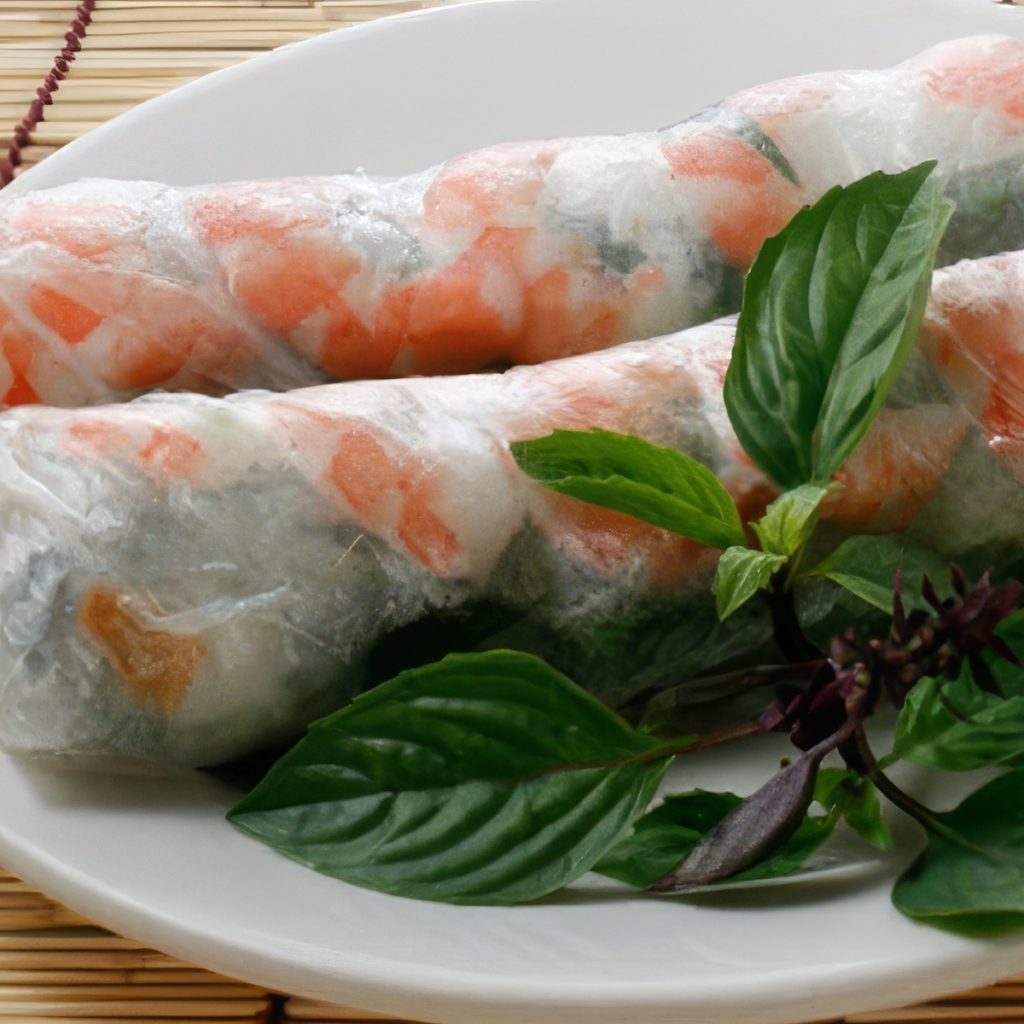

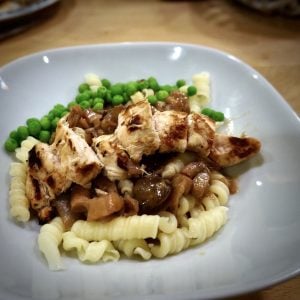



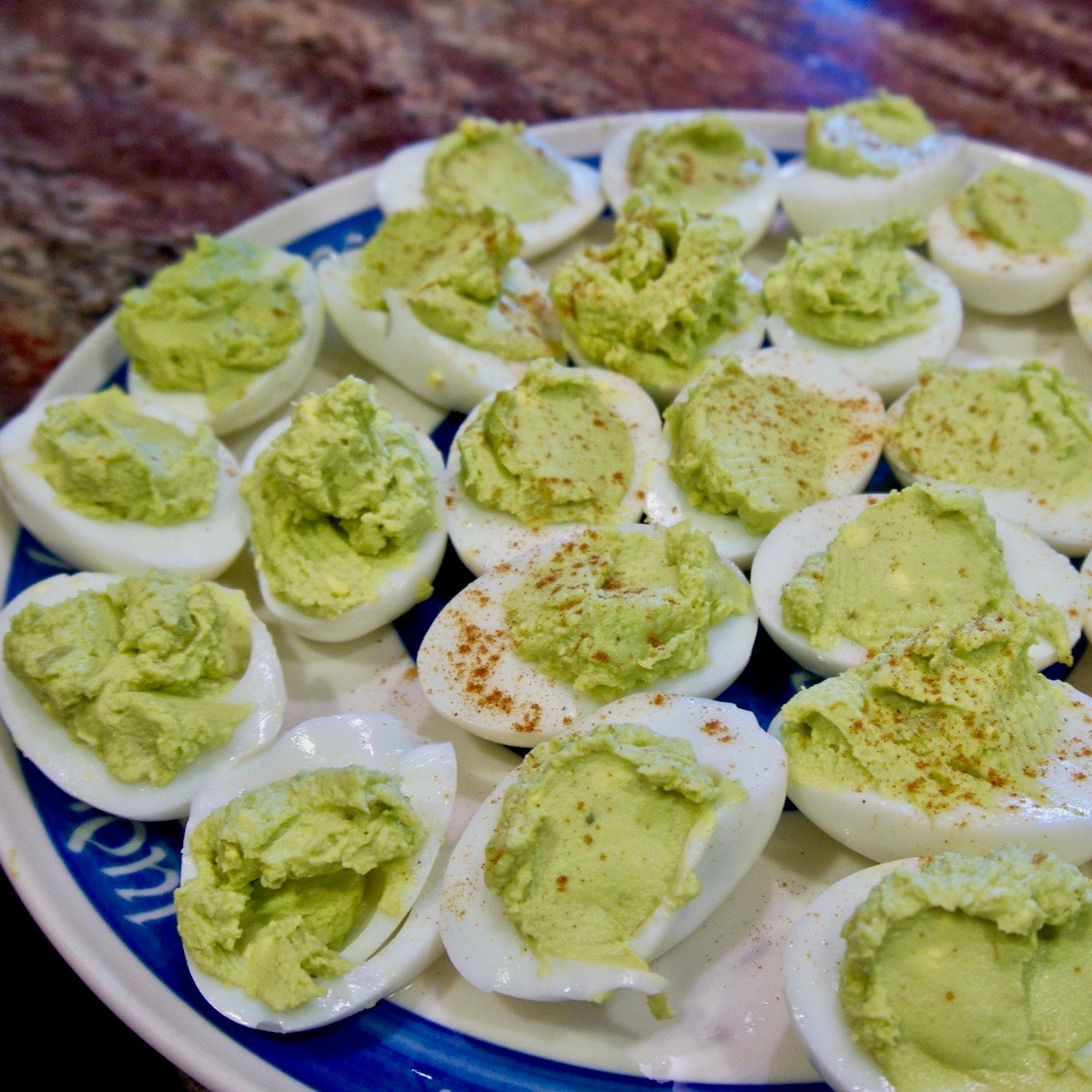
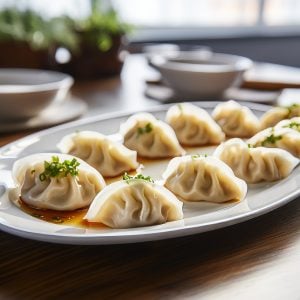
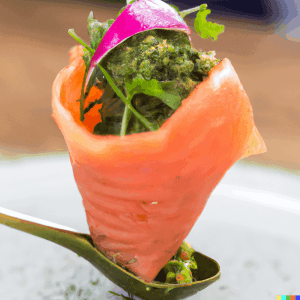
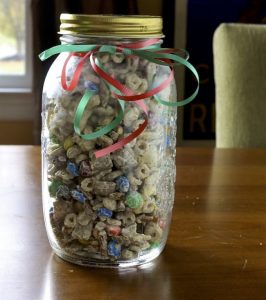
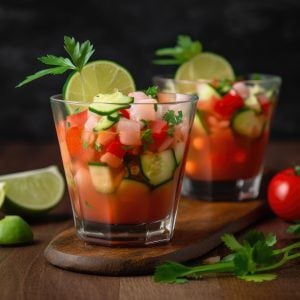
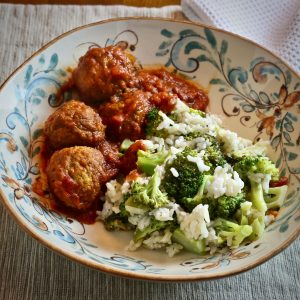
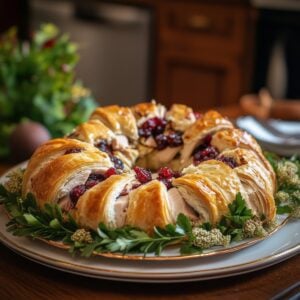



2 Responses
Thanks so much…
HI,I am from England and i use to go to the Chinese restaurants for the spring rolls, they were fried and so big and lots of food in them, pork, shrimp, bean sprouts and very tasty. I have not had a good tasting spring roll as they call them in England…is there any chance that you could find me a recipe for spring rolls from a Chinese restaurant in England. I have lived in CA for 18yrs now and i miss that taste. thank you,
Jane Broussard
Hi Jane, I think you are looking for what we in the USA call an egg roll and I will see what I can do. – RG